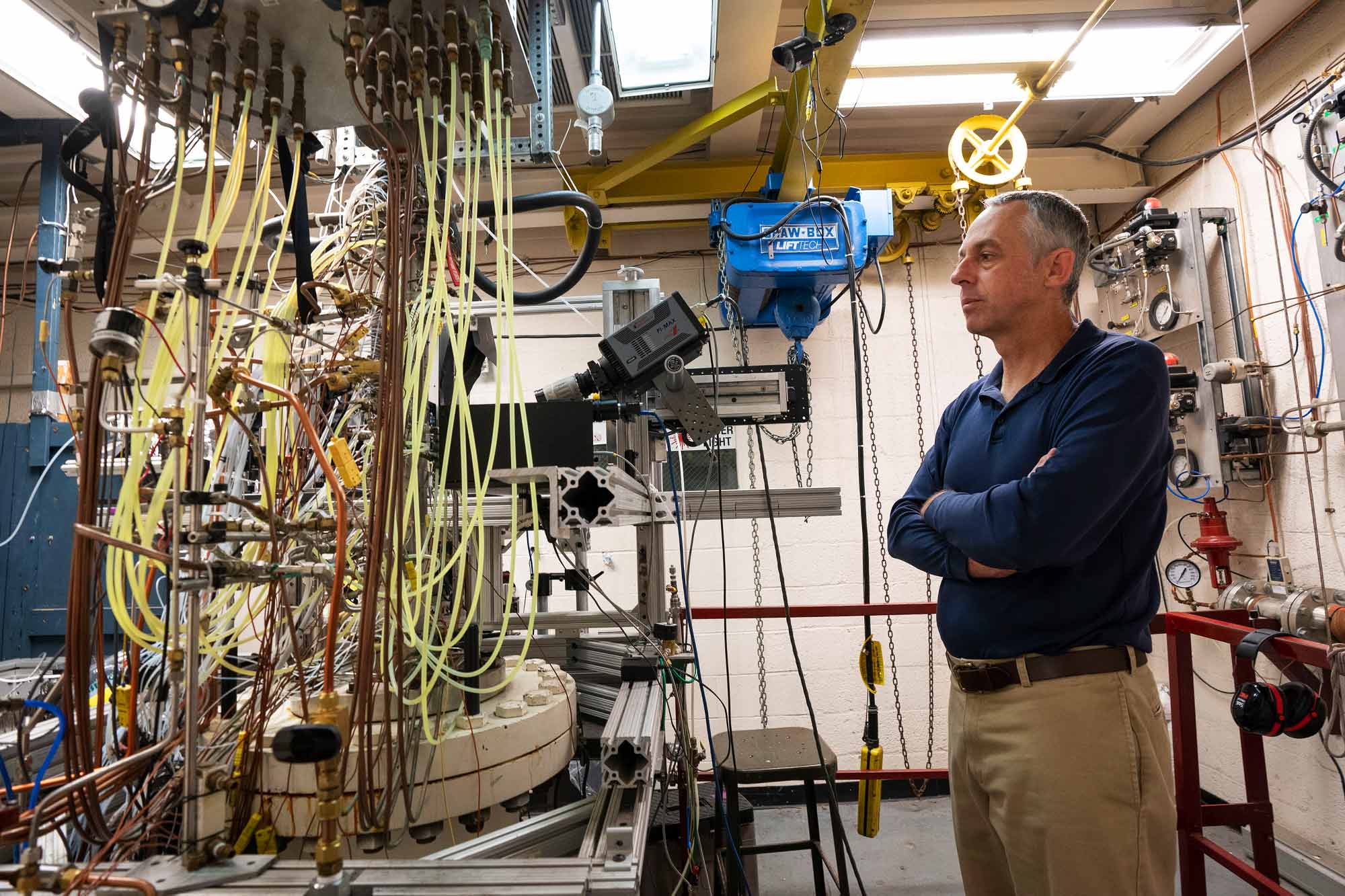Keeping the Fire Lit
Chris Goyne, an associate engineering professor and director of the UVA Aerospace Research Laboratory, is principal investigator for the project, which will test new methods of “flameholding” for the advanced engines, known as “scramjets.”
Scramjets scoop air through an inlet in the front of the engine and use the speed of the aircraft to compress the air.
“If you are flying fast enough, you can raise the temperature and pressure of the air so that when you mix the fuel in the combustion chamber, the fuel will burn and you can use that energy release to generate thrust,” Goyne said.
One of the benefits of these types of engines is that they remove the need for a rotating compressor, which is found in a standard jet engine.
But, “If you are flying at high speeds and you have one of these scramjet engines, it’s difficult to maintain the flame and ensure the engine is operating efficiently,” Goyne said. “The fuel and air don’t have very much time to burn before they exit the engine.”
Flameout also can happen due to maneuvering, high-altitude flight and other complex physical factors.
The answer to the problem appears to be, in part, plasma flame holders – essentially a high-tech sparkplug that may keep the engine operational under a host of changing conditions. UVA is partnering with FGC Plasma Solutions, which will provide that piece of highly specialized equipment.
In addition, the University of South Wales in Australia will enhance UVA’s wind tunnel capabilities for performance testing, and Ohio State University and the University of Arizona will provide computer modeling.
The Air Force Research Laboratory, NASA and Lockheed Martin Corp. will also provide support, while making sure project specifications dovetail with current government and industry applications.
UVA’s (Aero)Dynamic Team
The UVA Supersonic Combustion Facility represents the school’s core strengths in high-speed propulsion and materials research.
Members of the departments of Mechanical and Aerospace Engineering, Materials Science and Engineering, Engineering Systems and Environment, and Electrical and Computer Engineering all combine their talents there.
Goyne is a member of the Mechanical and Aerospace faculty. He’ll be working closely on the project with Chloe Dedic, an assistant engineering professor in the same department.
Dedic already has been leading investigations into combustion in Mach 5 conditions. She develops advanced laser-based measurement and performance testing for UVA’s novel combustion facility, which can simulate the Mach 5 conditions for hours at a time.
Students also will have the opportunity to gain experience on the new project. Engineering graduate student Steven Stine recently joined the research.
“We have a dream team of investigators and advisers on this project, and it is really exciting to work with a broad range of experts,” Stine said.
Goyne has led previous defense-related projects at UVA, including for the Air Force and the Defense Advanced Projects Agency, and maintains leadership roles within the University Consortium of Applied Hypersonics.
He is also an associate fellow of the American Institute of Aeronautics and Astronautics, having served as chair of its Hypersonic Technology and Aerospace Planes Program Committee, and is a member of the American Society of Mechanical Engineers.
“We hope to help the U.S. more quickly advance in high-speed military flight,” Goyne said. “Longer term, there are companies developing technology for hypersonic transportation of goods and people, as well as for space launch, and they may also benefit from our research.”









